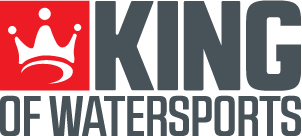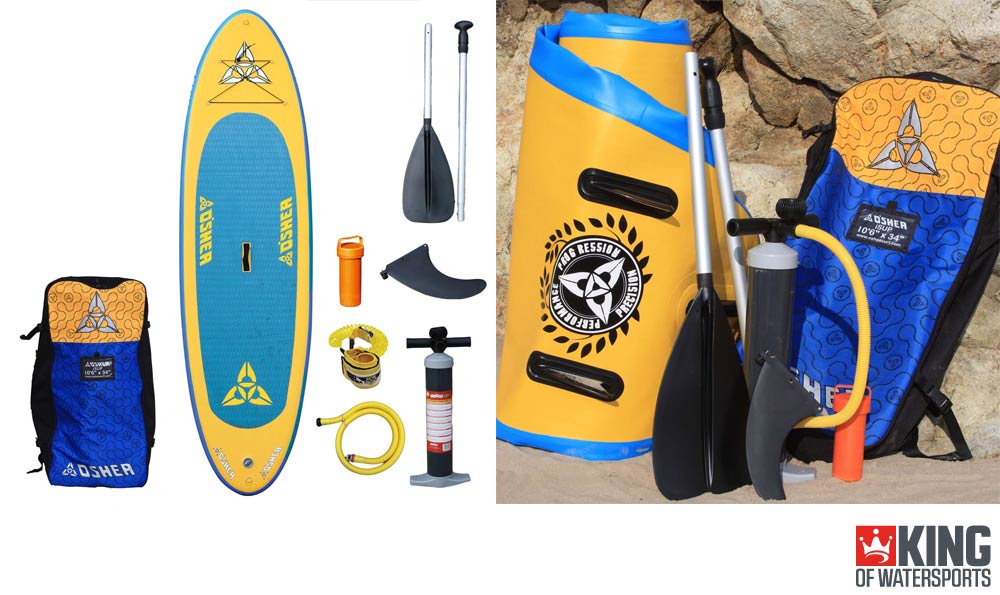INFLATABLE SUP USER GUIDE
How do I inflate my iSUP?
- Unroll your board so that deck grip faces up.
- Open valve cap on your board & make sure valve button is up.
- Attach pump hose to pump.
- Attach the other end of the pump hose to your board’s valve and start pumping.
- Inflate your board to 15 PSI as shown on pressure gauge.
- Remove pump hose from your board and close valve cap.
How do I install my fin?
Board volume and length are key factors when selecting the right size stand up paddle board.
SUP Volume
Use the formula below to estimate of how much Volume you should be looking at in your board.
Beginners - your weight in (kg) x 2 (e.g. 90kg x 2 = 180 litres)
Intermediates - your weight in (kg) x 1.7
Advanced - your weight in (kg) x 1.3
SUP Length
Please use our SUP board length size guides below to find the best suited stand up paddle board to you.
Surf Stand Up Paddle Board Size Guide
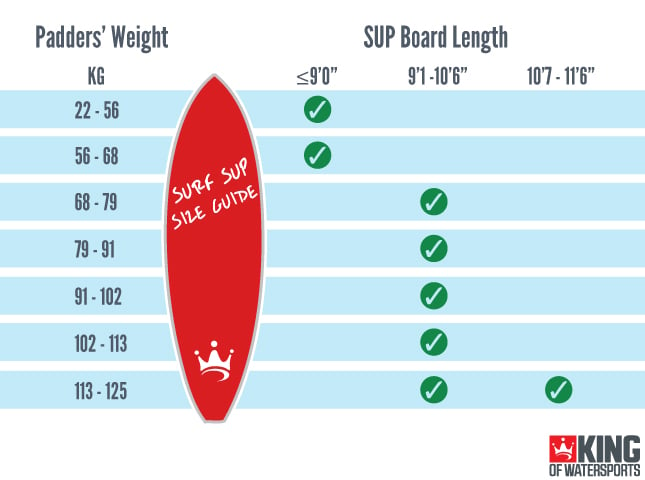
Allround Stand Up Paddle Board Size Guide
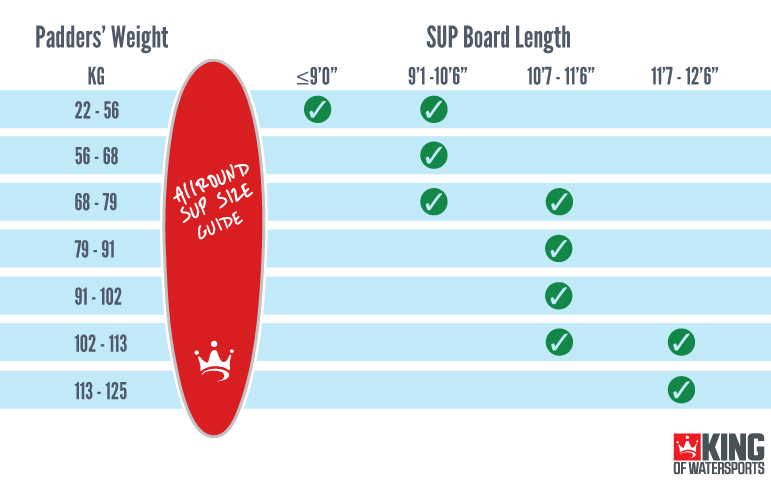
Flatwater/Race Stand Up Paddle Board Size Guide
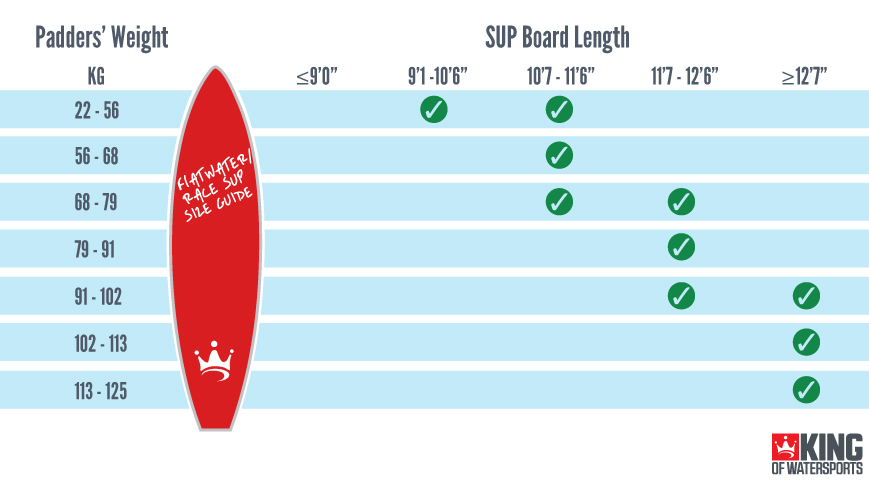
How do I deflate my iSUP?
There are three basic types of stand up paddle boards: surf, allround, and flatwater/race.
Surf specific stand-up paddle boards are typically shorter, have a narrower nose and tail and more rocker (curve) than allround, and flatwater/race boards. Surf paddle boards are perfect if you are always going to spend your time in the surf. The narrow shape makes the board much more maneuverable on a wave, but the trade off is that is that they are slower and don’t track in a straight line on flatwater and are also often less stable.
Allround boards are typically thicker, wider, and longer than surf specific models. These versatile, multi-purpose boards are great first time boards because they allow you to explore all aspects of the sport with only one board. Allround boards are wide enough to be very stable, have decent glide and tracking for flatwater paddling or open ocean touring, but also enough rocker and sidecut for decent surf performance. A windsurf option is available on some allround boards. A mast foot fitting is included on the deck of the board so that a windsurf sailing rig can be mounted, making these boards exceptionally versatile.
Flatwater boards are optimised for flatwater, open ocean paddling, and ‘downwinders’ (going from point A to B with the wind at your back). They are typically longer than allround boards, and often have a nose area that is pointed to help the board slice through the water smoothly, increase glide and help the board go straight. The sides are usually rounded for more glide and speed. Most flatwater boards are wide enough to be stable for beginners, however race boards, which are in the same family, are narrower to increase the boards speed. The narrowness makes race boards challenging for beginner paddlers and are not recommended.
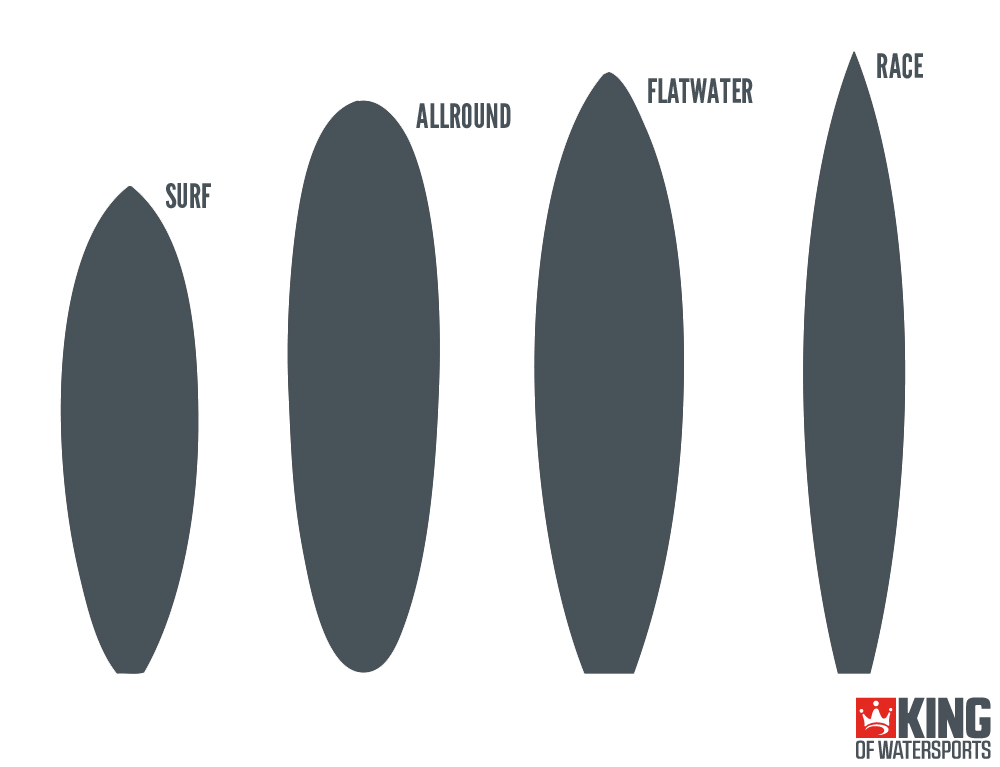
Shop by SUP Board Type:
How do I transport & store my iSUP?
There are three basic types of stand up paddle boards: surf, allround, and flatwater/race.
Surf specific stand-up paddle boards are typically shorter, have a narrower nose and tail and more rocker (curve) than allround, and flatwater/race boards. Surf paddle boards are perfect if you are always going to spend your time in the surf. The narrow shape makes the board much more maneuverable on a wave, but the trade off is that is that they are slower and don’t track in a straight line on flatwater and are also often less stable.
Allround boards are typically thicker, wider, and longer than surf specific models. These versatile, multi-purpose boards are great first time boards because they allow you to explore all aspects of the sport with only one board. Allround boards are wide enough to be very stable, have decent glide and tracking for flatwater paddling or open ocean touring, but also enough rocker and sidecut for decent surf performance. A windsurf option is available on some allround boards. A mast foot fitting is included on the deck of the board so that a windsurf sailing rig can be mounted, making these boards exceptionally versatile.
Flatwater boards are optimised for flatwater, open ocean paddling, and ‘downwinders’ (going from point A to B with the wind at your back). They are typically longer than allround boards, and often have a nose area that is pointed to help the board slice through the water smoothly, increase glide and help the board go straight. The sides are usually rounded for more glide and speed. Most flatwater boards are wide enough to be stable for beginners, however race boards, which are in the same family, are narrower to increase the boards speed. The narrowness makes race boards challenging for beginner paddlers and are not recommended.

Shop by SUP Board Type:
How do I use my SUP repair kit?
There are three basic types of stand up paddle boards: surf, allround, and flatwater/race.
Surf specific stand-up paddle boards are typically shorter, have a narrower nose and tail and more rocker (curve) than allround, and flatwater/race boards. Surf paddle boards are perfect if you are always going to spend your time in the surf. The narrow shape makes the board much more maneuverable on a wave, but the trade off is that is that they are slower and don’t track in a straight line on flatwater and are also often less stable.
Allround boards are typically thicker, wider, and longer than surf specific models. These versatile, multi-purpose boards are great first time boards because they allow you to explore all aspects of the sport with only one board. Allround boards are wide enough to be very stable, have decent glide and tracking for flatwater paddling or open ocean touring, but also enough rocker and sidecut for decent surf performance. A windsurf option is available on some allround boards. A mast foot fitting is included on the deck of the board so that a windsurf sailing rig can be mounted, making these boards exceptionally versatile.
Flatwater boards are optimised for flatwater, open ocean paddling, and ‘downwinders’ (going from point A to B with the wind at your back). They are typically longer than allround boards, and often have a nose area that is pointed to help the board slice through the water smoothly, increase glide and help the board go straight. The sides are usually rounded for more glide and speed. Most flatwater boards are wide enough to be stable for beginners, however race boards, which are in the same family, are narrower to increase the boards speed. The narrowness makes race boards challenging for beginner paddlers and are not recommended.

Shop by SUP Board Type:
